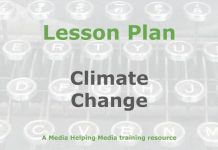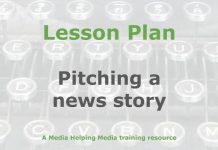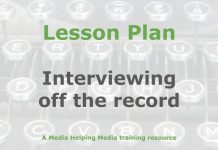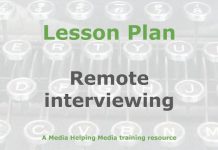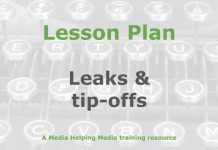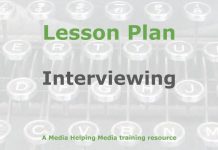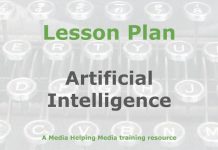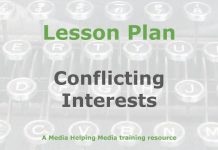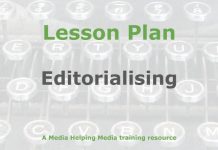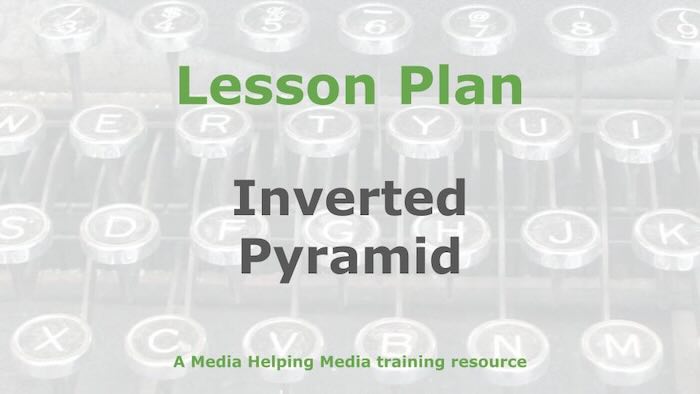 This lesson plan will help students prioritise the most important elements of a news story, ensuring readers grasp the most important facts even if they read the first few lines only.
This lesson plan will help students prioritise the most important elements of a news story, ensuring readers grasp the most important facts even if they read the first few lines only.
It’s based on the article ‘Essential elements of a news story‘ which we recommend you read first before adapting the lesson outline below for your own purposes.
Learning objective
Students will analyse and apply the inverted pyramid structure to organise news articles effectively. They will prioritise information by identifying and arranging key facts in descending order of importance.
- Student-facing objective: By the end of this lesson the student will be able to use the inverted pyramid structure to organise a news article, making sure the most important information comes first.
- Standards: Students will learn the correct order in which to present facts so that the audience is informed.
Learning activities
Warm-up
Display a brief news headline: “City library hosts annual book fair.” Ask students to identify the most crucial information in this headline. Discuss why this information is prioritised. Prompt students to consider what additional details might follow, such as the event’s date, location, and purpose. Encourage them to think about how these details support the main news. This activity primes students for understanding the inverted pyramid by focusing on identifying and prioritising information.
Direct instruction
- Introduce the inverted pyramid concept: Explain the inverted pyramid structure.
- Emphasise its purpose: to prioritize the most crucial information at the beginning, followed by less essential details. Use the example headline “Local council approves funding for new park” to illustrate how the core news is conveyed immediately. Discuss how this structure caters to readers with varying interest levels.
- Analyse a news article: Provide a short news article using the inverted pyramid structure. Ask students to identify the “What, Why, When, How, Where, and Who” in the article. Discuss how each element is prioritised. Highlight how the article’s structure allows readers to grasp essential information quickly, with additional details available for those interested.
- Create a news lead: Present a scenario: “A new community centre is opening in the neighbourhood.” Ask students to write a lead paragraph using the inverted pyramid structure. Guide them to include the most critical information first, such as the opening date, location, and purpose. Discuss their choices and the impact of their leads on reader engagement.
Guided practice
Think, Pair, Share: Guide students through a collaborative exercise to reinforce the inverted pyramid structure.
- Think: Present a new headline: “School board approves new curriculum.” Ask students to individually list the most important details that should follow in a full article.
- Pair: Have students pair up to compare their lists. Encourage them to discuss why they prioritised certain details and how they align with the inverted pyramid structure.
- Share: Invite pairs to share their prioritized details with the class. Facilitate a discussion on the effectiveness of their choices in conveying the core news.
- Revise: Ask students to refine their lists based on class feedback, ensuring the most crucial information is prioritised.
- Reflect: Conclude with a brief reflection on how the exercise helped them understand the importance of structuring news articles using the inverted pyramid.
Independent practice
- Exercise: Provide students with a news article draft that lacks structure. Instruct them to reorganise it using the inverted pyramid format. Ensure they prioritise the most crucial information at the beginning.
- Observation: Circulate to observe students’ progress. Offer guidance on prioritising information and maintaining clarity.
- Reflection: Encourage students to reflect on how the inverted pyramid structure aids in delivering concise and impactful news.
Assignment
Questions:
- What is the primary purpose of the inverted pyramid structure in journalism?
- How does the inverted pyramid structure benefit both the reader and the journalist?
- What’s one question you still have from today’s lesson?
Answers:
- Suggested answer to Question 1: To prioritise the most crucial information at the beginning, followed by less essential details.
- Suggested answer to Question 2: It allows readers to quickly grasp essential information and helps journalists deliver concise and impactful news.
Teacher resources
Differentiation guide
- Advanced learners: Encourage deeper analysis by having them explore how the inverted pyramid structure can be adapted for different types of news stories. Challenge them to identify stories where a narrative or analytical approach might be more effective and justify their reasoning.
- Striving learners: Provide additional scaffolding by breaking down the inverted pyramid structure into smaller, manageable parts. Use graphic organisers to help them visualise the hierarchy of information. Offer sentence starters to guide their writing of news leads.
- General strategies: Use peer mentoring, pairing advanced learners with striving learners to foster collaborative learning. Offer varied examples of news articles to illustrate the inverted pyramid in different contexts, reinforcing understanding through repetition and variety.
Notable definitions
- Inverted pyramid: A journalistic structure that presents the most crucial information at the beginning of an article, followed by progressively less essential details. This format caters to readers with varying levels of interest and time constraints.
- Lead: The opening paragraph of a news article, sometimes called a summary or intro. It is designed to grab attention and convey the most important information concisely. It typically answers some of the “What, Why, When, How, Where, and Who” questions in a news story.
- Newsworthiness: The criteria that determine the importance and relevance of a news story, guiding journalists in prioritising information within the inverted pyramid structure.
Required materials
- Whiteboard and markers: For displaying headlines and facilitating class discussions.
- Printed news articles: Examples of articles using the inverted pyramid structure for analysis.
- Paper and pens: For students to write their news leads and organise article drafts.
- Graphic organisers: To help visualise the hierarchy of information in the inverted pyramid.
- Projector: To display examples and guide class activities.
- Reflection sheets: For students to record their thoughts and reflections on the lesson.
Lesson summary
- Warm-up
- Direct instruction
- Guided practice
- Independent practice
- Assignment
The free teaching tools at the Khan Academy were used in the production of this lesson plan.
